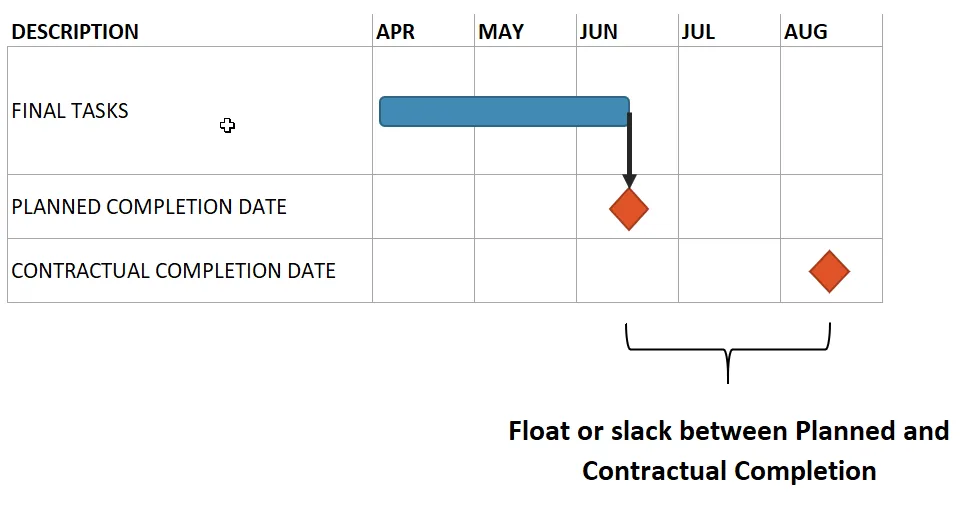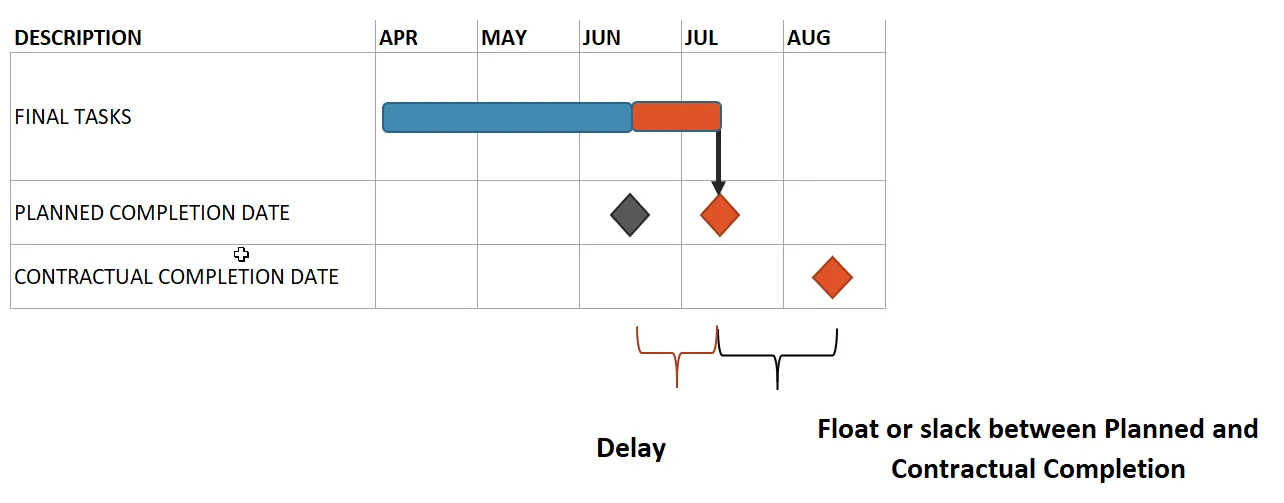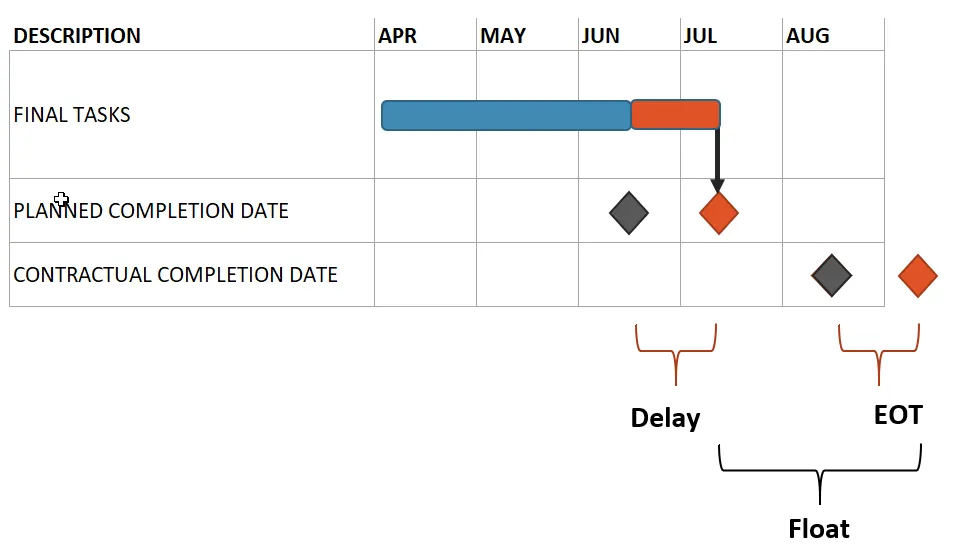This debate is as old and tattered as a weathered safety boot. And still, when it’s raised in a meeting, it manages to loosen the tempers and get everyone riled up, trapping some unfortunate attendees in the crossfire.
I have witnessed many professionals proclaiming with confidence (or perhaps arrogance rather) that: “The project owns the float!” or “The contractor owns the float!”.
To add my two cents to the confusion I typically ask: “What float are we talking about? Terminal float, free float, or total float?
This is what makes the debate a bit more complex to start with, but don’t run away yet, I won’t cloud the issue. When we discuss the issue of float ownership, we need to first clarify our own understanding and definition of it.
I have witnessed many heated shouting matches between parties just for them to awkwardly realise later on, they shared the same opinion all along. Their dispute was only semantic.
What does it mean to own the float?
NEC3 has one of the better taxonomies for understanding this concept. Under NEC3 a project essentially has two defined dates. A planned completion date and the contractual completion date.
The difference between the two is illustrated below:
When float is not owned by the contractor and a 1-month delay should occur on the illustration above, it would impact the planned completion date but not the contractual completion date.
The float between the planned and contractual dates will simply decrease.
NEC3 has a specific clause (63.3) which imparts ownership of this float onto the contractor. What this means is – in the event of a successful claim of a delay on the planned completion date, the contractual completion date is revised with the length of time, planned completion is impacted.
This is illustrated below and instead of decreasing the float between the two dates, the contractor obtains an extension of time (EOT) that keeps the float in place. This is what is meant by owning the float.
How does the JBCC deal with this float?
Although JBCC does not use the formal definitions as NEC3, the principle of a planned completion vs practical completion date remains. Under the JBCC, the practical completion date is the contractual date fixed in place by the contract data at tender stage. This date can only be revised through a formal mechanism such as an extension of time claim.
However, even if it’s not always indicated on a programme, there exists a planned completion date on a JBCC project that is disconnected from the practical completion date. Most often the planned and practical completion date is the same. But when the contractor is delayed or works faster than their planned programme, the planned date can be later or earlier than the practical completion date. Thus, creating either a delay, or terminal float respectively.
We find no specific clause dealing directly with float ownership under JBCC. However, the contract is still indirectly, very explicit in its handling of this issue.
JBCC (Clause 23) states that a contractor is entitled to an extension of the practical completion date for: “a delay to practical completion” caused by one or more circumstances as listed under 23.1, 23.2 and 23.3.
It is therefore important to note the wording here. It is very specific that only delays to practical completion warrant an entitlement to claim pursuant to the JBCC, nothing else.
What other delays can there be? Well there may be delays to the planned completion date that does not impact on the practical completion date. Or there are delays we refer to as slippage. Slippage is caused by activities being delayed in terms of their planned date, but such delays are not necessarily delaying practical completion or planned completion and hence such activities have float.
Further validation of this principle is found in terms of the claim itself where the contractor is obligated to indicate how a circumstance impacted on their critical path towards practical completion (Clause 23.6.2). If there is float between the planned completion date and the practical completion date and a delay only decreases that float without impacting the practical completion date, then the contractor will fail to demonstrate the above and won’t have a valid claim for extension of time.
Hence, we can settle the argument – within JBCC, any terminal or total float, essentially belongs to the employer or the project. This is not due to an express term, but rather by the simple fact that the contractor cannot claim an extension of time unless they suffer a delay on their critical path towards practical completion.
If delays do occur on a project and it does not impact the practical completion date, the contractor has no entitlement or mechanism to claim for any such extension. In other words, these delays would then have taken place on activities with float, irrespective of their position or status indicated on a programme.
And now I hear the contractors shouting at their computer screens: “Do you mean to tell me that if I’m delayed on a section of work, incur standing time and additional costs as a result of that delay, I cannot claim if it wasn’t on the critical path towards completion?
The answer is a resounding: “Sure you can claim, but not an extension of time.” You can still claim costs under clause 26.5. In that sense then, from a cost perspective the float could belong to the Contractor as they would be able to claim the cost component of delays irrespective of whether those delays impacted the practical completion date. However, these costs must be proven and substantiated.
Hopefully you can enter your next float discussion equipped with fresh knowledge which will enable you to manage the conversation proactively.
Note: Where reference is made to any clauses or definitions, it denotes the latest version of the JBCC contracts, which is Edition 6.2 May 2018 unless otherwise stated.




